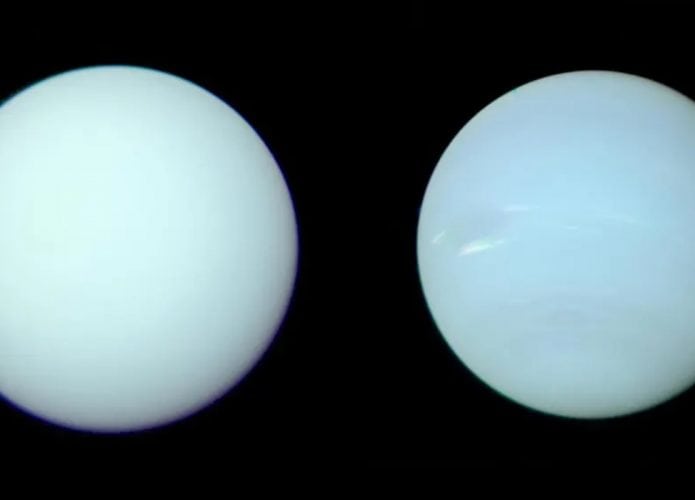Our solar system has just expanded: scientists have discovered a new moon in the orbit of Uranus – the first in twenty years – and two more in the orbit of Neptune. They are described as the “faintest” moons ever found on both planets, and some of the best ground-based telescopes and special image processing were necessary to detect them.
Understands:
- Astronomers from Carnegie Science He discovered two new moons in the orbit of Neptune and another in Uranus – the first in twenty years;
- Uranus's moon S/2023 U1 is 8 kilometers in diameter and orbits the planet in 680 days.
- Neptune's moons, S/2002 N5 and S/2021 N1, are 23 and 14 kilometers in diameter, respectively, and orbit the planet every nine and 27 years;
- This discovery indicates similarities in the composition of the distant satellites of the four giant planets in the solar system – Jupiter, Saturn, Uranus and Neptune.
Uranus' new moon, provisionally named S/2023 U1, is just 8 kilometers in diameter and orbits the planet in 680 days. Like all 27 other moons of Uranus, it should soon get its name based on Shakespeare's plays.
In the case of Neptune's moons, one was first seen in 2002 and then again in 2021 – when the second was also discovered. The brightest planet, S/2002 N5, has a diameter of 23 kilometers and orbits the planet every nine years. AS/2021 N1 is 14 kilometers long, and its orbit lasts for about 27 years. They must be named after the Nereids, sea nymphs from Greek mythology.
Read more:
The new moons show similarities between the four giant planets
The discovery indicates that the four giant planets in the solar system – Jupiter, Saturn, Uranus and Neptune – have similar compositions to their distant moons. “Even Uranus, which is tilted on its side, has a lunar population similar to that of other giant planets orbiting our sun,” explained Scott S. Sheppard of Carnegie School of Science.
“And Neptune, which likely captured the distant Kuiper Belt Triton — an ice-rich body larger than Pluto — an event that could have disrupted its lunar system, has exomoons that look similar to its neighbors,” Sheppard added.

“Incurable thinker. Food aficionado. Subtly charming alcohol scholar. Pop culture advocate.”






More Stories
NASA Releases Selfie of Perseverance Rover Working on Mars
NVIDIA driver includes hidden Final Fantasy XVI profile
PlayStation Plus Extra and Premium saw a significant drop in players in July